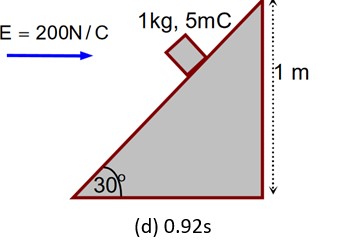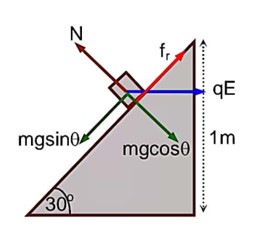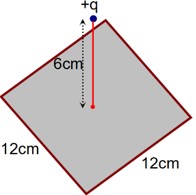Physics Electric Charge and Field
Get insights from 91 questions on Physics Electric Charge and Field, answered by students, alumni, and experts. You may also ask and answer any question you like about Physics Electric Charge and Field
Follow Ask QuestionQuestions
Discussions
Active Users
Followers
New answer posted
2 months agoContributor-Level 10
All the charge given to a conducting sphere resides on outer surface.
New answer posted
2 months agoContributor-Level 10
The following are the topics covered in this chapter: Electric Field and Field Lines, Gauss's Law, Electric Dipole, Conductors and Insulators, and Electric Flux.
New answer posted
2 months agoContributor-Level 10
For JEE Main exam, the Electric Charges and Fields is an important chapter. It is a part of Electrostatics unit. The weightage of this unit is around 6-9% of the total Physics section. You should expect around 3-5 questions in this unit including the questions from the class 12 physics chapter 1.
New answer posted
2 months agoContributor-Level 10
Indeed, it is an easy chapter of Class 12 Physics. In this chapter, you will learn about the foundational concepts like Gauss's law and electric fields.
New answer posted
2 months agoContributor-Level 10
Flux through the 6 sides of square (i.e. cube)
Flux through a square
New answer posted
2 months agoContributor-Level 10
In the medical entrance test NEET, this chapter has a moderate weightage. You can expect around 2-3 questions of this chapter that contributes to the 3-5% of the total marks in the Physics section.
New answer posted
2 months agoContributor-Level 10
Class 12 physics chapter 1 Electric Charges and Fields is an important chapter for the CBSE Board exam. In unit 1 of the CBSE Board exam of class 12 Physics, there are questions from three chapters including - Electric Charges and Fields, Electrostatics, and Electrostatic Potential and Capacitance. This unit carries a total 16 marks.
New answer posted
2 months agoContributor-Level 9
In non-polar molecules, centre of +ve charge coincides with centre of –ve charge, Hence, net dipole moment becomes zero.
When non-polar material is placed in external field, centre of charge does not coincide, hence give non-zero moment.
Taking an Exam? Selecting a College?
Get authentic answers from experts, students and alumni that you won't find anywhere else
Sign Up on ShikshaOn Shiksha, get access to
- 65k Colleges
- 1.2k Exams
- 679k Reviews
- 1800k Answers



